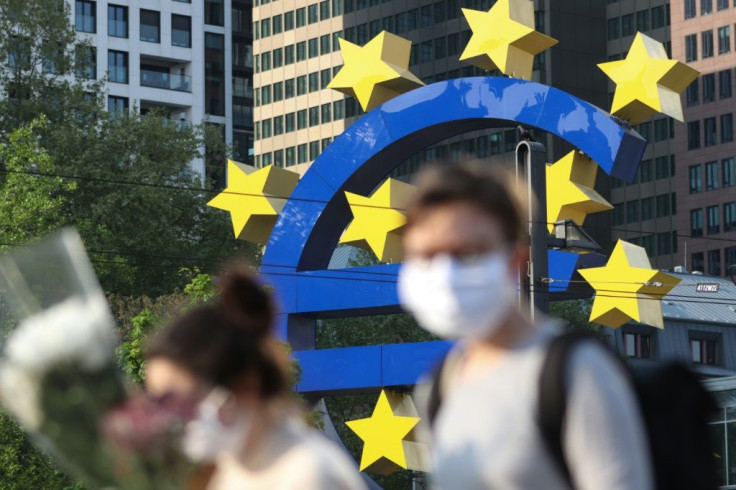Eurozone Jobless Rate Rose To 7.3% April, But Data Skewed By Government Furlough Schemes

KEY POINTS
- Unemployment in the 19-member eurozone climbed to 7.3% in April up from 7.1% in March
- For the wider 27-member European Union, the jobless rate reached 6.6% in April
- In the EU, youth unemployment climbed to 15.4%
Unemployment in the 19-member eurozone climbed to 7.3% in April up from 7.1% in March, as a result of the lockdown imposed to curb the spread of covid-19.
For the wider 27-member European Union, the jobless rate reached 6.6% in April, up from 6.4% in March. On the whole, some 14.1 million men and women were unemployed across the EU in April, an increase of 397,000 from March.
Andrew Kenningham, the chief Europe economist at Capital Economics, noted that the jobless data was better than expected – most analysts forecast the rate would reach 8.2%.
Neil Birrell, chief investment officer at Premier Miton Investors, also agreed the data was “better than expected.”
“It looks like people in Europe are keen to get back to work, as they are in the U.S.,” he said. “This should provide more support for markets as lockdown continues to ease.”
Government-backed furloughs and loan programs for businesses across Europe likely capped overall job losses.
But Kenningham warned that unemployment will continue to climb in the next few months.
“Looking ahead, the unemployment rate is likely to rise in the coming months as job subsidy schemes expire, bankruptcies pick up and people return to the labor market,” he said. “But we are now hopeful that our forecast for the unemployment rate to be around 12% at the end of the year will prove too pessimistic.”
European youths, under the age of 25, have been hit the hardest – the jobless rate among this segment of the workforce in the eurozone jumped to 15.8% in April, up from 15.1% in March. In the EU, youth unemployment climbed to 15.4% in April from 14.6% in March.
Youths were especially hurt by the loss of jobs in the service and leisure sectors.
In Spain, youth unemployment reached 33.2% in April, in Italy, it was at 20.3% and in France, at 21.8%. Even in Sweden, where a strict lockdown was never implemented, the youth jobless rate hit 24.4% in April.
For Europe’s largest economy, Germany, the unemployment rate rose to 6.1% in May, up from 5.8% in the prior month. Some 2.8 million Germans are now jobless.
However, Eurostat, the statistical office of the EU, cautioned that many of the people listed as unemployed were no longer actively seeking work – which likely distorted the overall data.
“Unemployment is a real litmus test for the economic fallout linked to the coronavirus pandemic, and governments across the EU will be highly sensitive about how these figures evolve in such unchartered waters,” said Robert Alster, head of investment services at Close Brothers Asset Management. “The elephant in the room is the basic economic principle of demand. Unless governments, in collaboration with the [European Central Bank], can find a way to stimulate it, and fast, the EU may find itself in this uncomfortable position for some time to come.”
The unemployment figures are also likely skewed by furlough programs implemented by some European government. For example, in Germany, the wages of more than 10 million workers were subsidized by a “short-time work” program that was designed to save jobs during the pandemic
Bert Colijn, senior eurozone economist at ING Bank, pointed out that short-time work schemes are “incredibly effective at cushioning” the initial impact of the economic crisis.
Across the EU, he noted, the percentage of workers that participated in short-time work schemes was about 27% at the end of April. “Combine that with an already rather rigid labor market and you get a negligible immediate effect of the historical economic contraction on jobs so far, which stands in large contrast with the number of unemployment claimants in the U.S. which has topped 40 million,” he wrote.
The short-time work schemes, he emphasized, “absorb a lot of the immediate impact of the crisis on the labor market, but at the same time it also masks the job losses that are likely still up ahead.”
Regarding the phenomenon of people who have given up the job search, Colijn indicated that in Italy, the unemployment rate dropped from 9.1% in February to 6.3% in April, “which is not because people have been finding jobs but mainly because people have stopped looking for work in the lockdown period. Unemployment is expected to rise significantly over the coming months when people start looking for work again.”
© Copyright IBTimes 2025. All rights reserved.





















